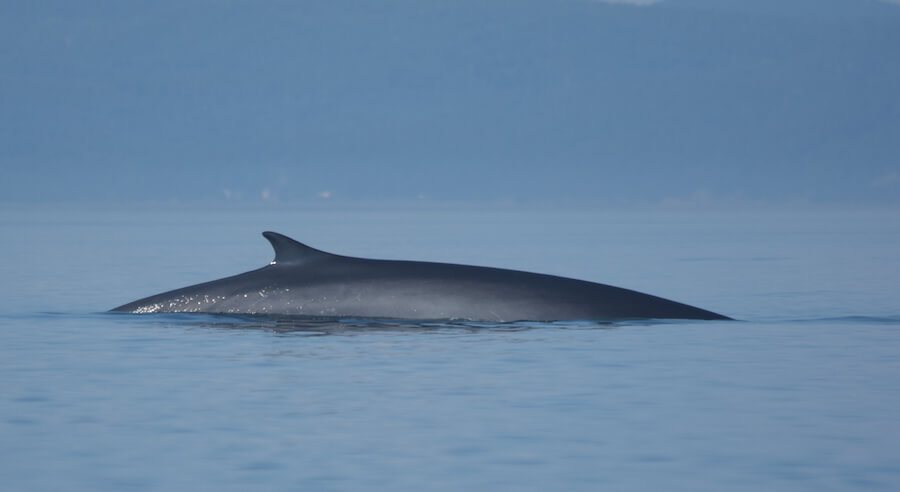Kashkan
Fin Whale


-
ID number
Bp918
-
Sex
Male
-
Year of birth
Unknown
-
Known Since
2000
Identifying marks
His truncated dorsal fin forms a straight line. Behind his dorsal fin, his back shows a small protuberance.
History
Bp918 is a fin whale that was first observed in 2000. He has been seen almost every year since 2006, making this individual a seasonal resident of the St. Lawrence Estuary. A biopsy taken in 2006 helped confirm the animal’s sex: Bp918 is a male. In 2019, Bp918 received his name, Kashkan. It means «Waves» in Innu-aimun, the language traditionally spoken by the Essipit Innu nation.
Observations history in the Estuary
Years in which the animal was not observed Years in which the animal was observed
Latest news from the publications Portrait de baleines
First observed in the estuary in 2000, Bp918 has been seen almost every year since, so much so that he has finally been given a name of his own! Meaning “waves” in Innu-Aimun, the language traditionally spoken by members of the Essipit Innu community, he was given the name Kashkan in 2019. Biopsied in 2006 – it’s a male! – Bp918 was first seen this year between Cap de Granite and Pointe à la Carriole by a few witnesses in the right place at the right time. It was a photo of the whale’s back that brought his identity to light! The identification of fin whales requires the contribution of several sharp eyes before a conclusion can be drawn. In the case of Bp918, it was his chevron and the particular shape of his dorsal fin that made it possible to identify him. Most of the time, the animal’s right flank offers more information and facilitates identification, but it is still possible to use the left flank to distinguish between individuals. Whether we like it or not, whales come to us unexpectedly: you have to be quick to capture even a small part of their shiny backs on camera!
Bp918 is a fin whale that was first observed in 2000. He has been seen almost every year since 2006, making this individual a seasonal resident of the St. Lawrence Estuary. A biopsy taken in 2006 helped confirm the animal’s sex: Bp918 is a male. This year, he was seen in the Marine Park in May with the one they call “Ti-Croche” and again more recently, this time still in the company of Ti-Croche as well as another fin whale. His truncated dorsal fin forms a straight line. Behind his dorsal fin, his back shows a small protuberance. In 2015, he had a scar along the chevron on his right side. This year, Bp918 arrived in the Marine Park with new markings. On his right flank, one can see circular lines near the chevron going toward the back, which makes for a quick ID. Without taking samples, it’s difficult to say what the origins of these markings are.
Temporary marks and scars may stem from various external sources. Small circular stigmata (a few centimetres in diameter) are sometimes the signature of lamprey, a carnivorous fish with a suction-cup-like mouth that attaches to the bodies of other fish or cetaceans to feed on their blood. The cookiecutter shark, a temperate-water species, takes puck-shaped chunks of flesh from whales, creating divots in their skin. Parallel rake-like lines on rorquals are often attributed to killer whale attacks. In toothed whales, this type of marking is more often due to duals between individuals of the same species. For example, sperm whales spar with one another, leaving marks on their heads. Male belugas may also leave scars on the flanks, fins and tails of females during sex play. Lastly, bacteria, viruses or protozoa that come into contact with an animal can cause skin lesions, leaving visible traces that sometimes resemble tattoos. The marks on the back of Bp918 might be attributable to such lesions.
Some of the individuals observed within the Marine Park are recognizable thanks to these particularities. The blue whale Crinkle, for example, is known for its bumpy skin. Zipper, a fin whale, bears a scar reminiscent of its namesake. These scars evolve over time. Photo-identification notably makes it possible to track their evolution over time and to note any new markings that might have appeared over the winter or other season.




